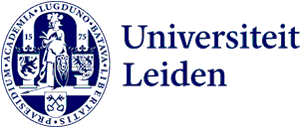Admission Requirements
Open to students that are registered for the minor Our Universe.
Description
The Universe has inspired humanity’s imagination throughout the ages. In this course we explore two aspects.
First we look at how astronomical knowledge is presented in popular media, such as books, movies, and art works. We will use a recently published book, a science fiction novel, as a case study to assess how astronomical concepts are applied. Are they used to build a creative story? Or deformed to fit the story?
Second, we apply our knowledge of exoplanets, astrobiology, and astronomy to the question of what alien life forms are possible. We recall the vast range of physical properties of the solar system and exoplanets (e.g., gravity, atmosphere, radiation). Next, students explore how these physical properties influence the evolution of life. After summarizing this knowledge in astrobiology, groups will be assigned an exoplanet and are tasked to design a plausible alien species that can inhabit this planet. Each alien will be presented in a plenary session. During this session, each group will receive a list of follow-up questions and an astrophysical challenge for their alien species (e.g., their host star passed close to a black hole). Based on this input, each group writes a short, scientifically correct, story about their alien.
Course objectives
At the end of this course the students will be able to:
Explain how the basic physical properties of exoplanets are related to the habitable zone.
Summarize the key planetary characteristics that affect habitability.
Describe fundamental principles of biological evolution in relation to planetary environments.
Apply knowledge of planetary physics and biology to design a scientifically plausible alien species.
Recognize the ways in which astronomical knowledge is applied in works of fiction and art and debate the purpose of this application.
Timetable
See MyTimetable.
Mode of Instruction
Lectures and interactive discussion sessions (tutorials).
Excursion.
Introductory lectures prepare students for the interactive tutorials. During these tutorials students work in small groups under guidance of a lecturer or TA, discuss the material and work towards their group projects.
Assessment Method
Participation in the tutorial sessions and excursion (pass/fail).
Group presentations and poster presentation.
Students need to pass each component to pass the course.
Reading list
Will be provided on Brightspace.
Registration
Registration for courses and exams takes place via MyStudymap.
Contact
Minor coordinator: Prof.dr. Serena Viti | viti@strw.leidenuniv.nl
Course coordinator: Dr. Sjoert van Velzen | sjoert@strw.leidenuniv.nl
